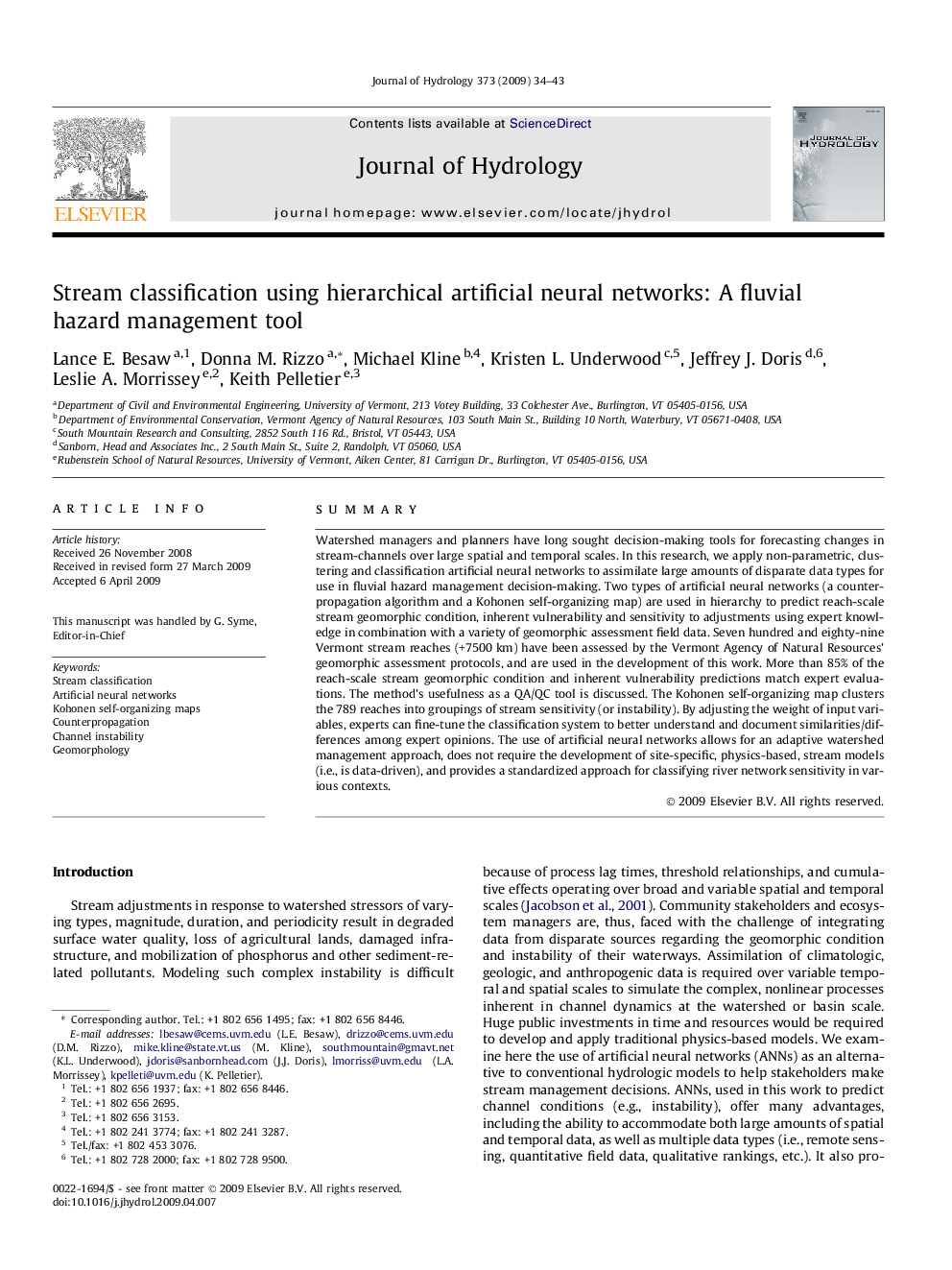| کد مقاله | کد نشریه | سال انتشار | مقاله انگلیسی | نسخه تمام متن |
|---|---|---|---|---|
| 4578854 | 1630079 | 2009 | 10 صفحه PDF | دانلود رایگان |

SummaryWatershed managers and planners have long sought decision-making tools for forecasting changes in stream-channels over large spatial and temporal scales. In this research, we apply non-parametric, clustering and classification artificial neural networks to assimilate large amounts of disparate data types for use in fluvial hazard management decision-making. Two types of artificial neural networks (a counterpropagation algorithm and a Kohonen self-organizing map) are used in hierarchy to predict reach-scale stream geomorphic condition, inherent vulnerability and sensitivity to adjustments using expert knowledge in combination with a variety of geomorphic assessment field data. Seven hundred and eighty-nine Vermont stream reaches (+7500 km) have been assessed by the Vermont Agency of Natural Resources’ geomorphic assessment protocols, and are used in the development of this work. More than 85% of the reach-scale stream geomorphic condition and inherent vulnerability predictions match expert evaluations. The method’s usefulness as a QA/QC tool is discussed. The Kohonen self-organizing map clusters the 789 reaches into groupings of stream sensitivity (or instability). By adjusting the weight of input variables, experts can fine-tune the classification system to better understand and document similarities/differences among expert opinions. The use of artificial neural networks allows for an adaptive watershed management approach, does not require the development of site-specific, physics-based, stream models (i.e., is data-driven), and provides a standardized approach for classifying river network sensitivity in various contexts.
Journal: Journal of Hydrology - Volume 373, Issues 1–2, 30 June 2009, Pages 34–43